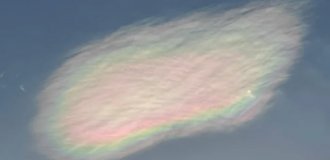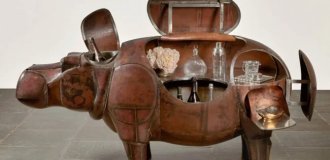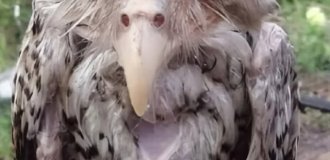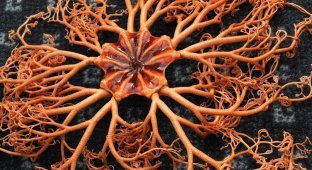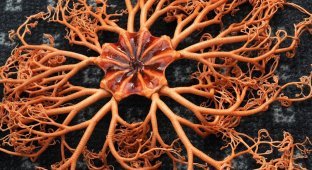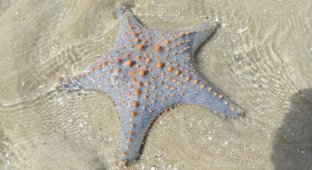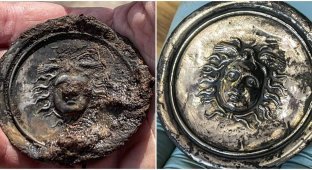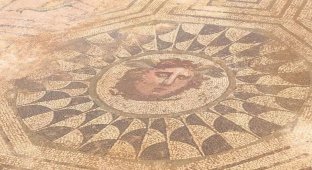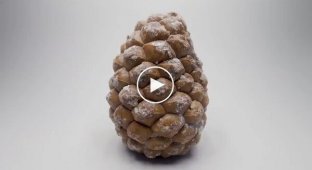Gorgonocephalus: A creepy lump of chaotic flesh and tentacles (11 photos)
Gorgonocephalians are slow-moving predatory echinoderms with five multi-branched rays, found primarily in cold polar waters. 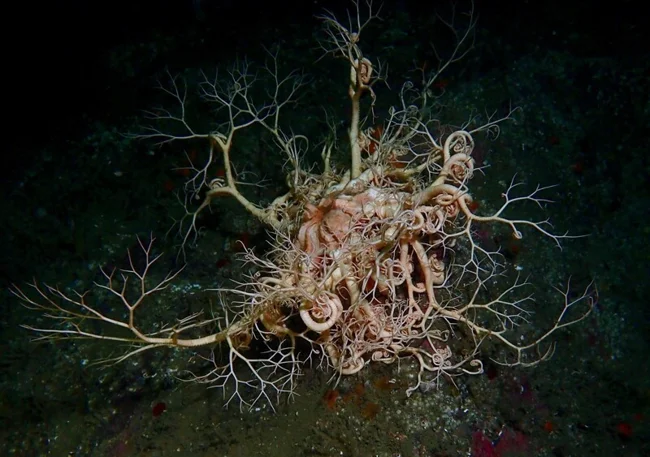
I don't even know how to describe the animal that came my way today. A bunch of worms? A tumbleweed from the animal world? A predatory bush? One way or another, something needs to be done with the Gorgon's head. Let's figure out what it is, what it's eaten with, and whether it's eaten at all. 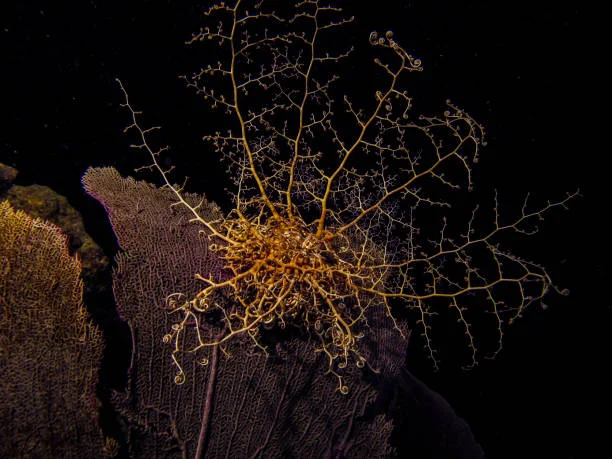
Hey, let's hug? I can hug you with thousands of arms at once!
It's worth starting with the fact that the Gorgon's head is an echinoderm. An ophiuros, to be more precise. And ophiuros, in turn, are relatives of the well-known starfish. Only if starfish decided to push their internal organs into their rays, ophiuros, on the contrary, made their tentacles soft and mobile. 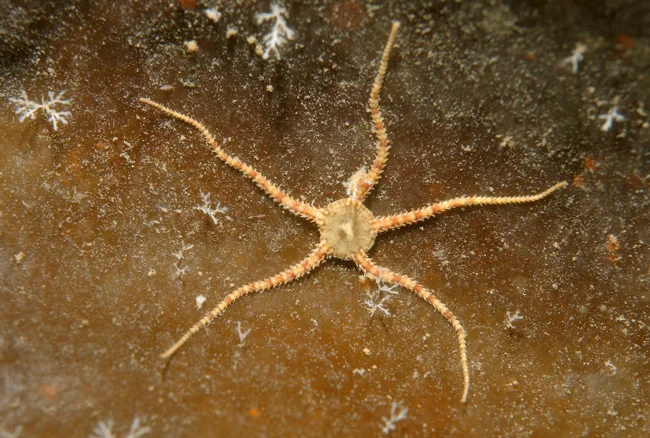
A typical, average brittle star looks like a pentagon with spiky threads sticking out of it. 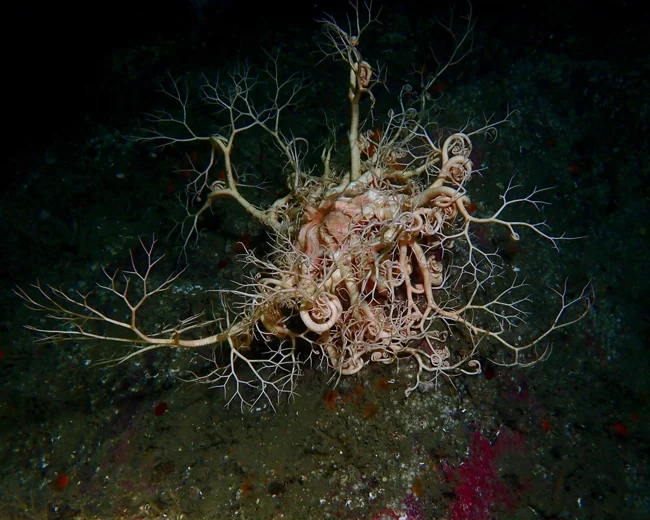
But our hero for today's analysis is a real monster from the worlds of Lovecraft!
By the way, brittle stars usually have five rays. Yes, even ours. It's just that each of its rays splits in two until it turns into a sponge of many small processes. And the number of these processes directly depends on the age and size of the animal. An ophiura older than 10 years can acquire several thousand tentacles, and the span of its rays reaches 1.8 meters. This is the largest ophiura on the planet and one of the largest echinoderms in principle! 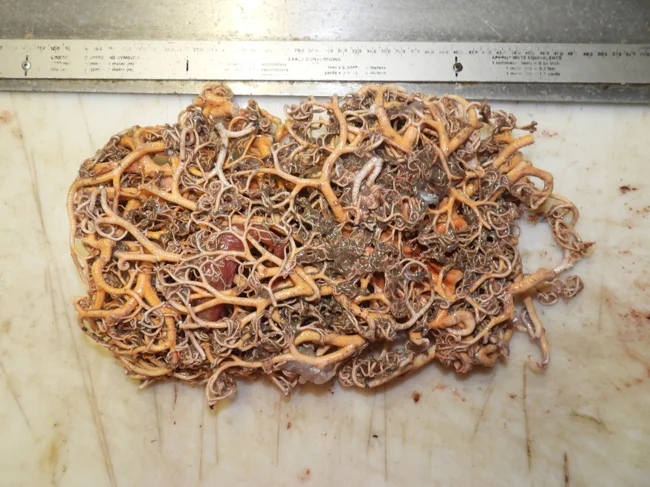
Fishermen are often scared when they pull something like this out of the bottom. But this is just a young ophiura Gorgonocephalus. 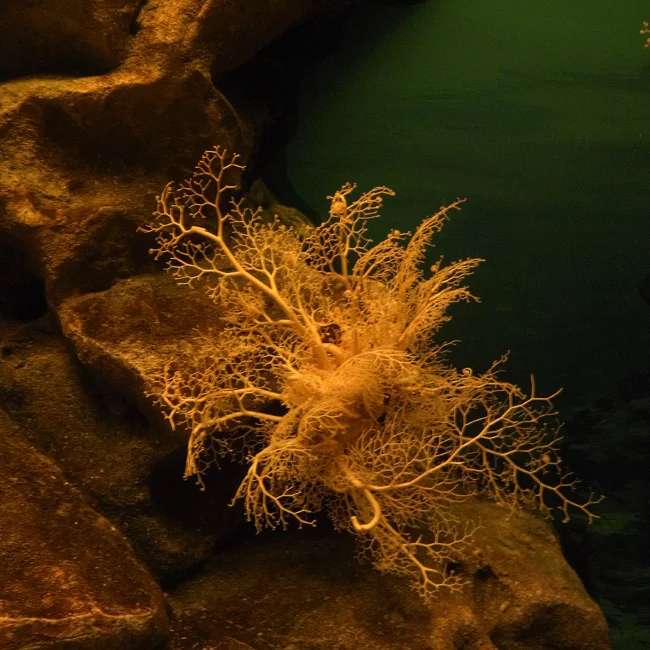
Sudden fact: echinoderms are considered the closest relatives of chordates. So meet your cousin!
True, it is almost impossible to see it stretched out to its full length. The animal spends its entire adult life in the form of a bush, and in case of danger, it even shrinks into a lump. And why would it stretch out? The gorgon-headed one lies on its back, catches all sorts of small animals with its tentacles and sends them into its mouth. Moreover, the caught prey is first enveloped in small appendages, packed in mucus and waits for its time. When the ophiura decides that it has accumulated enough food, it rolls up the entire ray, stuffs it into its mouth and licks it thoroughly. 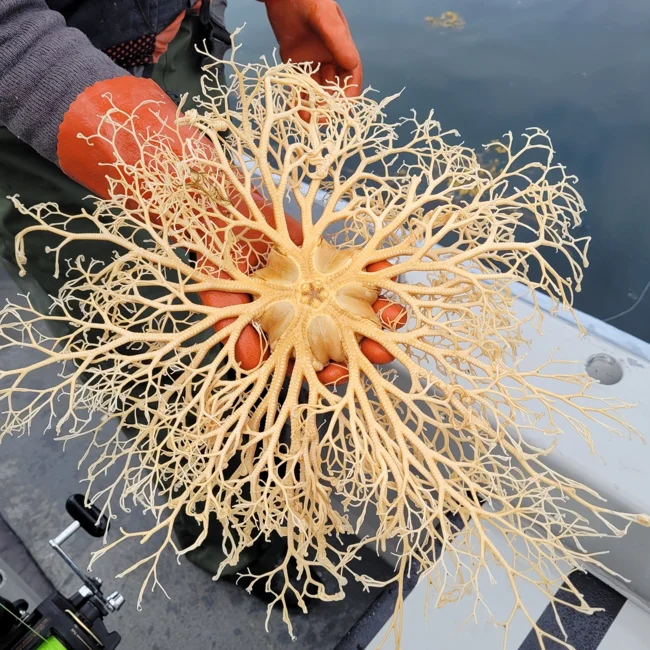
In the very center of this wonderful structure, you can find a mouth that periodically licks its tentacles. 
So this is what a sea tree is...
With such a lifestyle, crawling along the substrate is not necessary at all. Lie in a heap, grab some treats, enjoy life. What can I say, the heads are so lazy that they don't even crawl to each other for the sake of reproduction. It's just that at a certain time - the specific period and its length depend on the region where the animals live - male brittle stars release sperm into the water, females release eggs, and hermaphrodites (yes, they have those too) release both at the same time. 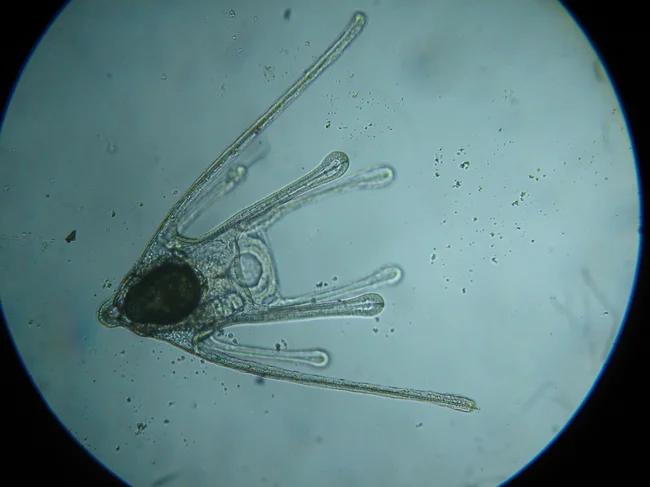
And this is what the brittle star larva, ophiopluteus, looks like.
Then the sexual products themselves meet, fertilize themselves and are carried by currents throughout the ocean. Moreover, the larvae do not care where exactly the currents carry them. The Gorgon's head is found in the Arctic Ocean and on the coast of California and Japan, at depths from 8 to 2000 meters. 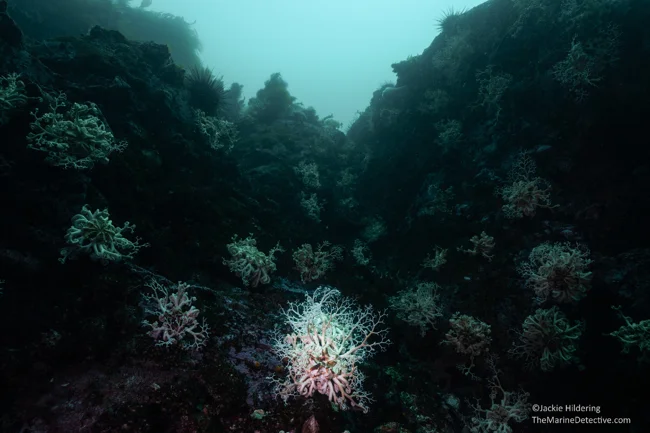
Do you also think that they are watching us?
The only requirement for the place of residence is that there be corals nearby. After all, in the early stages of development, the Gorgon's head is a parasite of corals, feeding on the soft tissues of filter feeders. Only when the rays begin to branch, the brittle stars fall off their victim and turn into a peaceful neighbor and harmless filter feeder, reminiscent of an alien from another planet. 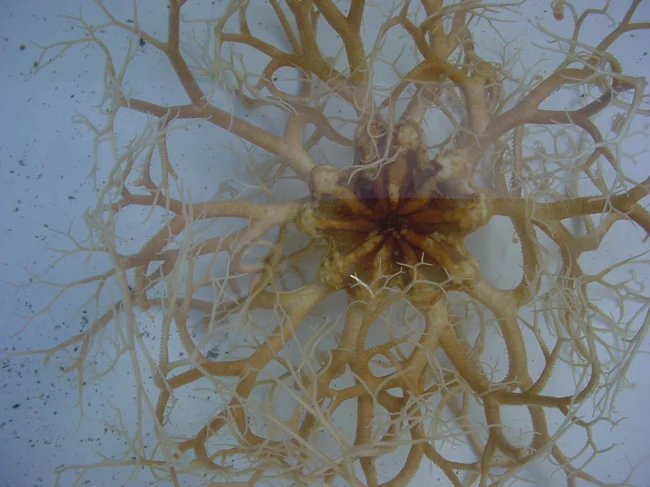
You look closely at the lump of dirt. You fall into hysterics from horror.

